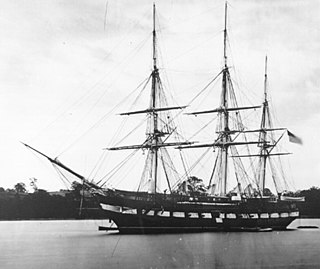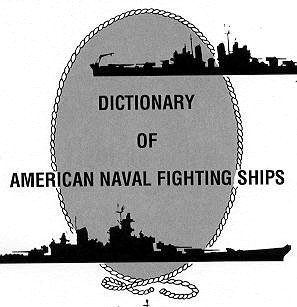The escort carrier or escort aircraft carrier, also called a "jeep carrier" or "baby flattop" in the United States Navy (USN) or "Woolworth Carrier" by the Royal Navy, was a small and slow type of aircraft carrier used by the Royal Navy, the United States Navy, the Imperial Japanese Navy and Imperial Japanese Army Air Force in World War II. They were typically half the length and a third the displacement of larger fleet carriers. While they were slower, carried fewer planes and were less well armed and armored, escort carriers were cheaper and could be built quickly, which was their principal advantage. Escort carriers could be completed in greater numbers as a stop-gap when fleet carriers were scarce. However, the lack of protection made escort carriers particularly vulnerable and several were sunk with great loss of life. The light carrier was a similar concept to escort carriers in most respects, but were capable of higher speeds to allow operation alongside fleet carriers.

Newport News Shipbuilding (NNS), a division of Huntington Ingalls Industries, is the largest industrial employer in Virginia, and sole designer, builder and refueler of United States Navy aircraft carriers and one of two providers of U.S. Navy submarines. Founded as the Chesapeake Dry Dock and Construction Co. in 1886, Newport News Shipbuilding has built more than 800 ships, including both naval and commercial ships. Located in the city of Newport News, their facilities span more than 550 acres (2.2 km2), strategically positioned in one of the great harbors of the East Coast.
USS Enterprise may refer to the following ships and other vessels:

The Mare Island Naval Shipyard (MINSY) was the first United States Navy base established on the Pacific Ocean. It is located 25 miles northeast of San Francisco in Vallejo, California. The Napa River goes through the Mare Island Strait and separates the peninsula shipyard from the main portion of the city of Vallejo. MINSY made a name for itself as the premier US West Coast submarine port as well as serving as the controlling force in San Francisco Bay Area shipbuilding efforts during World War II. The base closed in 1996 and has gone through several redevelopment phases. It was registered as a California Historical Landmark in 1960, and parts of it were declared a National Historic Landmark District in 1975.

The Norfolk Naval Shipyard, often called the Norfolk Navy Yard and abbreviated as NNSY, is a U.S. Navy facility in Portsmouth, Virginia, for building, remodeling, and repairing the Navy's ships. It is the oldest and largest industrial facility that belongs to the U.S. Navy as well as the most multifaceted. Located on the Elizabeth River, the yard is just a short distance upriver from its mouth at Hampton Roads.
Eight ships of the United States Navy and United States Revenue Cutter Service have been named USS Massachusetts, after the Commonwealth of Massachusetts.

In the 18th century and most of the 19th, a sloop-of-war in the Royal Navy was a warship with a single gun deck that carried up to eighteen guns. The rating system covered all vessels with 20 guns and above; thus, the term sloop-of-war encompassed all the unrated combat vessels, including the very small gun-brigs and cutters. In technical terms, even the more specialised bomb vessels and fireships were classed as sloops-of-war, and in practice these were employed in the sloop role when not carrying out their specialized functions.

The New York Shipbuilding Corporation was an American shipbuilding company that operated from 1899 to 1968, ultimately completing more than 500 vessels for the U.S. Navy, the United States Merchant Marine, the United States Coast Guard, and other maritime concerns. At its peak during World War II, NYSB was the largest and most productive shipyard in the world. Its best-known vessels include the destroyer USS Reuben James (DD-245), the cruiser USS Indianapolis (CA-35), the aircraft carrier USS Kitty Hawk (CV-63), the nuclear-powered cargo ship NS Savannah, and a quartet of cargo-passenger liners nicknamed the Four Aces.

The Tacoma class of patrol frigates served in the United States Navy during World War II and the Korean War. Originally classified as a gunboat (PG), they were reclassified as a patrol frigate (PF) on 15 April 1943. The class is named for its lead ship, Tacoma, a Maritime Commission (MARCOM) S2-S2-AQ1 design, which in turn was named for the city of Tacoma, Washington. Twenty-one ships were transferred to the British Royal Navy, in which they were known as Colony-class frigates, and twenty-eight ships were transferred under Lend-Lease to the Soviet Navy, where they were designated as a storozhevoi korabl, during World War II. All Tacoma-class ships in US service during World War II were manned by United States Coast Guard crews. Tacoma-class ships were transferred to the United States Coast Guard and various navies post-World War II.

Landing Ship, Tank (LST), or tank landing ship, is the naval designation for ships first developed during World War II (1939-1945)to support amphibious operations by carrying tanks, vehicles, cargo, and landing troops directly onto shore with no docks or piers. This enabled amphibious assaults on almost any beach. The bow of the LST had a large door that would open with a ramp for unloading the vehicles. The LST had a special flat keel that allowed the ship to be beached and stay upright. The twin propellers and rudders had protection from grounding. The LSTs served across the globe during World War II including in the Pacific War and in the European theatre.

Fore River Shipyard was a shipyard owned by General Dynamics Corporation located on Weymouth Fore River in Braintree and Quincy, Massachusetts. It began operations in 1883 in Braintree, and moved to its final location on Quincy Point in 1901. In 1913, it was purchased by Bethlehem Steel, and later transferred to Bethlehem Shipbuilding Corporation. It was sold to General Dynamics in 1963, and closed in 1986. During its operation, yardworkers constructed hundreds of ships, for both military and civilian clients.

A sister ship is a ship of the same class or of virtually identical design to another ship. Such vessels share a nearly identical hull and superstructure layout, similar size, and roughly comparable features and equipment. They often share a common naming theme, either being named after the same type of thing or with some kind of alliteration. Often, sisters become more differentiated during their service as their equipment are separately altered.

The Federal Shipbuilding and Drydock Company was a United States shipyard, active from 1917 to 1948. It was founded during World War I to build ships for the United States Shipping Board. During World War II, it built ships as part of the U.S. Government's Emergency Shipbuilding program. Operated by a subsidiary of the United States Steel Corporation, the shipyard was located at Kearny Point where the mouth of the Hackensack River meets Newark Bay in the Port of New York and New Jersey. The shipyard site is now part of River Terminal, a massive distribution facility that is partially a foreign trade zone.

USS Contoocook was a screw sloop-of-war built for the United States Navy during the American Civil War. She is named after a river and village in New Hampshire. She was launched 3 December 1864 at Portsmouth Navy Yard and commissioned 14 March 1868, commanded by Captain George Balch.

USS Passaic (YN-113/AN-87) was a Cohoes-class net laying ship built for the United States Navy during World War II. She was commissioned in March 1945 and spent her entire career in the Pacific Ocean. She was decommissioned in March 1947 and placed in reserve. She was sold to the Dominican Republic in September 1976, as patrol vessel Calderas (P209). As of 2007, Calderas remained active in the Dominican Navy.
USS Passaconaway (YN-114/AN-86) – sometimes called USS Skakamaxon -- was a Cohoes-class net laying ship which was assigned to protect United States Navy ships and harbors during World War II with her anti-submarine nets. Her World War II career was short due to the war coming to an end, but, post-war, she continued salvage operations, including those at Bikini Atoll, before being struck from the Navy in 1947.
Dominican ship Separación may refer to one of the following ships of the Dominican Navy:
The American Ship Building Company was the dominant shipbuilder on the Great Lakes before the Second World War. It started as Cleveland Shipbuilding in Cleveland, Ohio in 1888 and opened the yard in Lorain, Ohio in 1898. It changed its name to the American Ship Building Company in 1900, when it acquired Superior Shipbuilding, in Superior, Wisconsin; Toledo Shipbuilding, in Toledo, Ohio; and West Bay Shipbuilding, in West Bay City, Michigan. With the coming of World War I, the company also acquired Buffalo Dry Dock, in Buffalo, New York; Chicago Shipbuilding, in Chicago, Illinois; and Detroit Shipbuilding, in Wyandotte, Michigan. American Shipbuilding ranked 81st among United States corporations in the value of World War II military production contracts.

The Kalamazoo-class monitors were a class of ocean-going ironclad monitors begun during the American Civil War. Unfinished by the end of the war, their construction was suspended in November 1865 and the unseasoned wood of their hulls rotted while they were still on the building stocks. If the four ships had been finished they would have been the most seaworthy monitors in the US Navy. One was scrapped in 1874 while the other three were disposed of a decade later.













